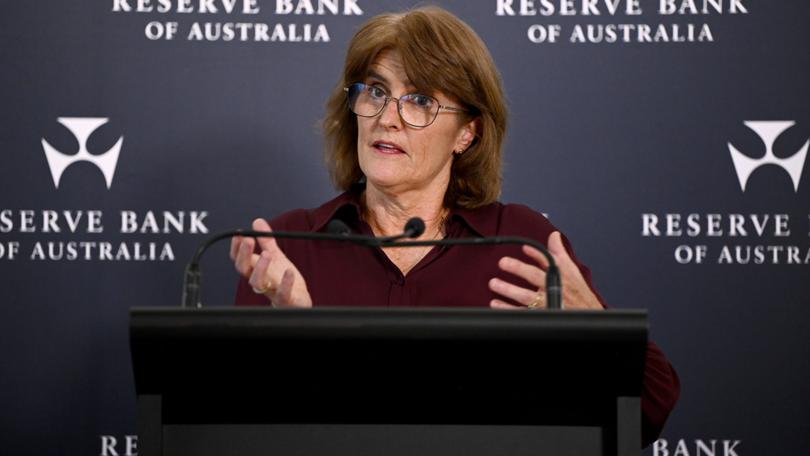RBA wary of ‘excessive’ cash rate fine-tuning as consumers look to save extra cash amid cost-of-living squeeze

The Reserve Bank board — which chose to keep the official cash rate on hold at 4.35 per cent earlier this month — is wary of “excessive fine-tuning” given the uncertain economic outlook.
Minutes of the board’s meeting, released on Tuesday, confirm another rate hike was considered, particularly if the jobs market remained ultra-tight and led to a rapid pick-up in consumer spending. But they also highlight a desire to be clear risks around inflation had “risen somewhat”.
The ultimate decision to keep rates steady was based on the uptick in quarterly inflation and other economic data being insufficient to push rates higher. RBA staff forecasts for the economy still show “a credible path” for the RBA board to push inflation lower in a reasonable timeframe. Through its rapid rate hikes from May 2022, the RBA has been working to lower the highest inflation rate in three decades, which peaked at nearly 8 per cent in late 2022. It is now 3.6 per cent and the RBA targets between 2 and 3 per cent.
Sign up to The Nightly's newsletters.
Get the first look at the digital newspaper, curated daily stories and breaking headlines delivered to your inbox.
By continuing you agree to our Terms and Privacy Policy.The RBA’s minutes came as new consumer research from Westpac suggested the uptick in inflation on a quarterly basis in the first three months of the year has weighed on Australians, who are now more uneasy about its future course.
“In May, consumers were slightly more positive about the outlook for both family finances and the economy, but this was completely offset by a deterioration in current assessments of family finances and buyer sentiment,” Westpac senior economist Matthew Hassan said.
The RBA also noted weaker than expected spending in the first quarter but real disposable income was stabilising at a higher than expected level, indicating a higher savings rate.
“(Board) members noted that a small share of households were curtailing their spending in the face of income constraints, but many others were simply choosing to reduce their spending,” the RBA minutes state.
Keeping the cash rate steady was also deemed possible insurance, mitigating risks that demand did not grow as much as expected, the RBA board noted, which would bring inflation back to the target range more quickly than it had expected, and potentially pushing unemployment higher.
“Importantly, inflation expectations remained well anchored,” the minutes state. “Given this, and the higher-than-usual level of uncertainty about the economic outlook, members judged that it remained reasonable to look through short-term variation in inflation to avoid excessive fine-tuning.”
The minutes also reinforce Governor Michele Bullock’s messaging that the process of returning inflation to target was unlikely to be smooth, particularly given how uncertain the economic outlook was. The RBA board’s decision was made a week before the Federal Budget so the minutes do not discuss any potential implications of the household stimulus and support announced.
One of the major cost-of-living supports on which the Federal Government is focusing is the Stage 3 tax cuts, which kick in from July 1.
Westpac’s survey showed 37 per cent of people expect to pay less tax, 27 per cent expect no impact, 20 per cent are unsure and 15 per cent said they were “not applicable”.
Of those expecting a tax cut, 30 per cent plan to save all of it and another 50 per cent will save at least half. The average annual tax cut is $1888 across 2024-25, or $36 per week.
“Given . . . a very cautious mindset, consumers are more likely to use funds from fiscal measures to repair their finances than go on a spending spree that could undermine the RBA’s efforts to bring inflation back to target,” Mr Hassan said.
Research from National Australia Bank earlier this month suggested one in three Australians plan to save their tax cuts.
The RBA board next meets on June 17-18 and economists widely expect rates will remain on hold. Rate cuts are not expected until at least November but a growing number of economists say they are more likely in early 2025.
